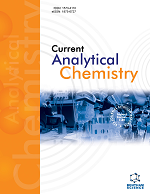
Full text loading...
We use cookies to track usage and preferences.I Understand

Fossil fuels have been used extensively as primary energy sources, which has resulted in nearly depleted reserves, a contaminated environment, and a variety of negative health effects globally. Hydrogen has been proposed by researchers as an effective “carbon neutral” fuel. Large-scale hydrogen production through electrochemical water splitting necessitates the use of inexpensive, extremely effective, and earth-abundant electrocatalysts.
In this study, chitosan–sodium tripolyphosphate (TPP) nanoparticles are combined with CuO nanostructures to produce chitosan–TPP–CuO (CT/CuO) nanocomposite. Chitosan–TPP nanoparticles were first synthesized using the ionic gelation method. These nanoparticles were then extracted, and CuO was synthesized in situ in polymer nanoparticles using a simple chemical precipitation method. Chitosan and CuO are abundantly available and are environmentally beneficial materials. The porous structure and open channels within the chitosan polymer matrix host the CuO nanostructures, which promote electrolyte penetration, mass transport, and charge transfer, while the metal-oxide nanostructures act as catalytic centers. The structural and morphological properties of the CT/CuO nanocomposite were investigated using XRD, HRSEM, and HRTEM. The band gap and functional groups in the material were measured by UV–Vis DRS and FTIR methods, respectively. Elemental analysis was conducted utilizing EDS, HRSEM, and XPS. Thermal characteristics of the CT/CuO nanocomposite were investigated using TG-DTA and DSC methods. Electrochemical techniques were used to investigate the activities of HER and OER.
The XRD examination of the CT/CuO nanocomposite revealed semi-crystalline chitosan peaks and a monoclinic CuO structure. HRSEM and HRTEM pictures indicated that chitosan–TPP nanoparticles and CuO nanostructures were evenly spread and clustered to create a nanoparticulate matrix. UV–Vis DRS indicated that the CT/CuO nanocomposite had a direct band gap of 1.702 eV. The FTIR and XPS studies revealed the various bonds and oxidation states of the nanocomposite. Thermal analyses demonstrated that the inclusion of CuO increased the thermal stability of the CT/CuO nanocomposite. CT/CuO nanocomposite exhibited excellent OER and HER activity, requiring a low overpotential of 444 mV and 379 mV at 10 mA cm−2 and -10 mA cm−2, respectively.
Biopolymer metal-oxide nanocomposites could potentially be used as electrocatalysts in water splitting, energy conversion, storage devices, sensors, and several other fields.

Article metrics loading...

Full text loading...
References


Data & Media loading...
Supplements